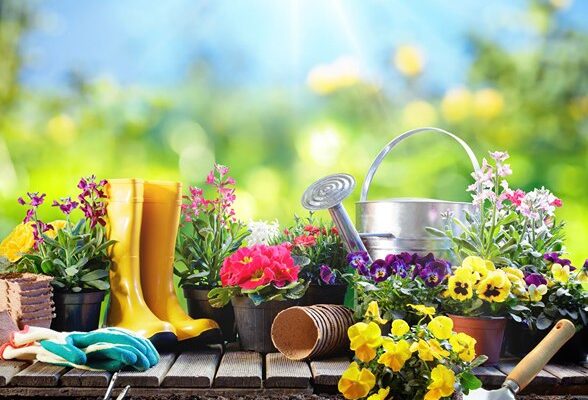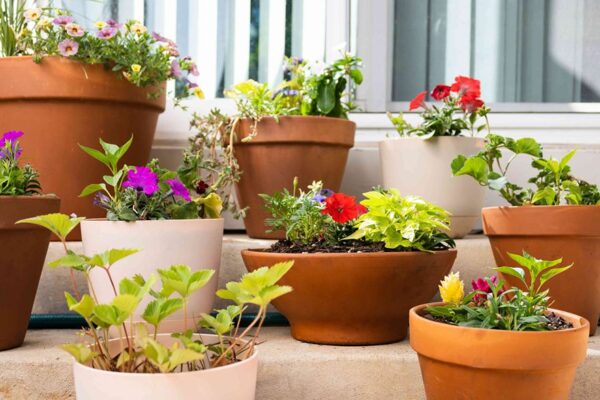11 Sizzling Types of Hot Peppers for Garden
Hot peppers have become increasingly popular, leading the charge in a nationwide obsession with spicy cuisine. Exploring the world of culinary delights, one cannot overlook the diverse and captivating types of hot peppers available for adding a fiery kick to any dish. The market offers a wide range of options when it comes to types of hot peppers, each with its own distinct flavor and heat level.
A recent survey revealed that a remarkable 80% of consumers in the United States have developed a fondness for hot and spicy foods. Furthermore, 6 in 10 individuals have embraced the practice of cooking hot and spicy meals at home. If you are among those who relish the fiery kick of heat in your culinary endeavors, growing your own fresh hot peppers is the ideal solution for accessing a diverse range of flavors.

When it comes to gardening, choosing the right types of hot peppers for your garden can open up a world of vibrant colors and intense flavors to elevate your homegrown culinary experiences. Gardening enthusiasts can indulge in the art of growing their own fiery delights by selecting from a diverse range of types of hot peppers specifically tailored for cultivation in home gardens.
This article provides comprehensive guidance on selecting the best types of hot peppers to suit your palate, along with valuable insights on successful cultivation.
Carolina Reaper
Carolina Reaper peppers currently hold the title for the hottest pepper in the world. These bright red or yellow peppers measure 2 to 3 inches in length, depending on the variety. Carolina Reaper plants are large and bushy, reaching heights of 4 to 5 feet and widths of 4 feet at maturity, requiring ample space to grow. The peppers are ready for harvest approximately 75 days after planting. Due to their extreme heat, they should be used sparingly. Even a small piece of a single pod can add flavor to a large pot of chili. Alternatively, drying and grinding them into a super-hot pepper powder can be used sparingly in dishes.

Cayenne Peppers
Cayenne peppers, commonly used in Mexican sauces and Asian curries, add a fiery kick to dishes. While they are often dried and ground into powder form, they can be used as a substitute for fresh habanero or serrano peppers. These skinny peppers reach a mature length of 5 to 6 inches, typically around 70 days after planting. For maximum heat, it is advisable to allow the peppers to fully mature. Cayenne peppers grow on compact plants that average 18 inches in height, making them suitable for container gardening.
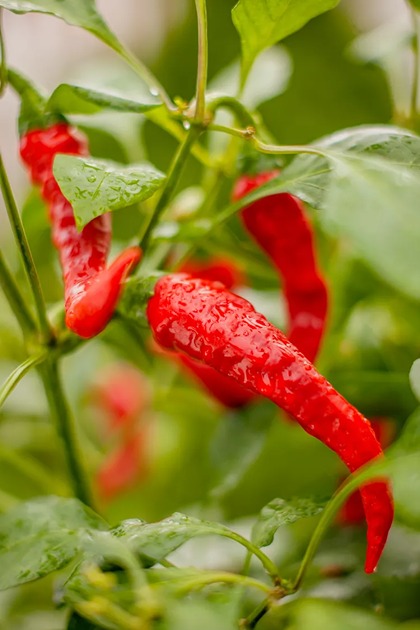
Ghost Pepper
Ghost peppers, also known as Bhut Jolokia, originate from India and are renowned as one of the hottest peppers on the planet. These peppers grow to lengths of 2 to 3 inches and ripen from green to bright red. Ghost pepper plants are relatively large, reaching heights of up to 4 feet. While they are slow-growing, the peppers are not ready to harvest until 100 to 120 days after planting. To support the tall plants, it is recommended to use cages or stakes in the later stages of growth. Ghost peppers can be eaten fresh in small amounts, added to sauces, or dried and powdered for various dishes. They are more than 400 times hotter than a jalapeno and should be handled with caution.

Habanero Peppers
Habanero peppers, resembling tiny bell peppers, are known for their intense heat. They are approximately 100 times hotter than the average jalapeno. Habaneros are typically orange, although there are also less spicy red varieties available. These peppers grow on short plants, reaching a height of 24 inches, which makes them suitable for container gardening, raised beds, or small-space gardening. Habanero peppers are ready to harvest about 95 days after planting, making them a late-season pepper. Red habaneros can be harvested earlier, around 75 days after planting.
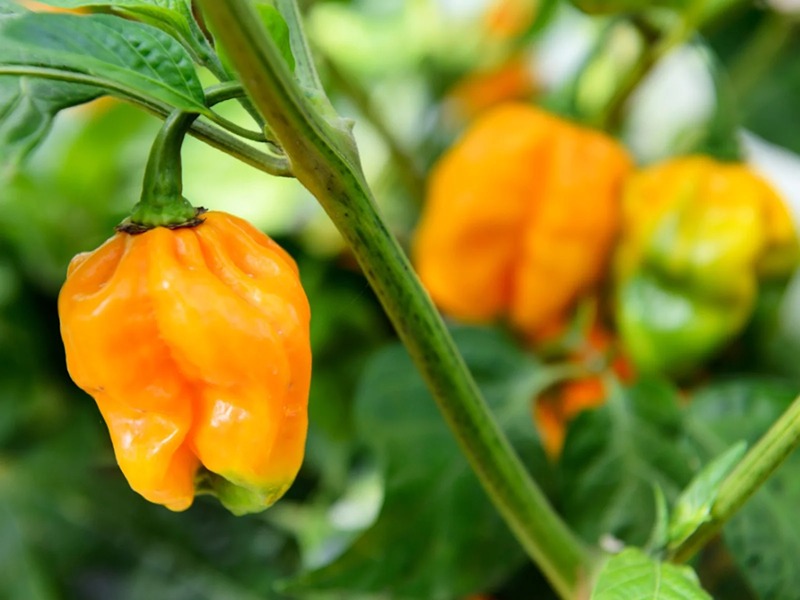
Hatch Chile Peppers
Hatch chiles, renowned for their connection to the town of Hatch in southern New Mexico, are an integral part of New Mexican culture but can be grown in various regions. The diverse range of Hatch chile varieties offers varying levels of spiciness. Typically, these chiles grow on plants approximately 30 inches tall and are ready for harvest in around 80 days. Green Hatch chiles can be picked, roasted, and peeled for immediate consumption, while red ones can be left on the plant to dry and later used for creating flavorful enchilada sauce.
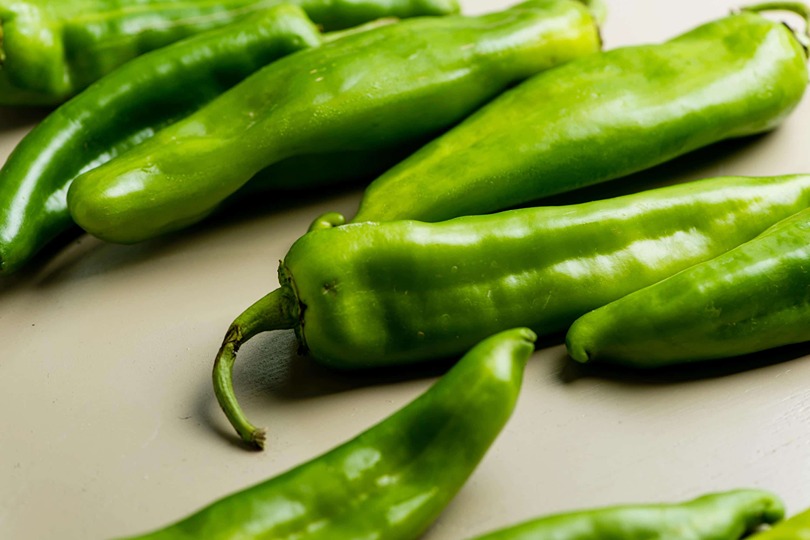
Jalapeno Peppers
Jalapenos, originating from Mexico, have gained popularity across the country due to their ease of cultivation and versatility in terms of heat levels. The spiciness of jalapenos can vary from mild to hot, depending on the specific variety. Typically harvested while green, they can be left to ripen to a red color, resulting in milder and sweeter flavors. With compact plants ranging from 2 to 3 feet in height at maturity, jalapenos are well-suited for container gardening. Dried jalapenos are commonly referred to as chipotles.
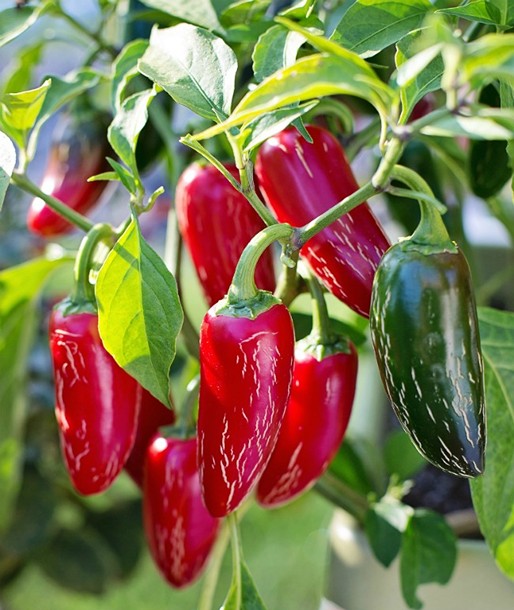
Paprika Peppers
Paprika peppers, widely used in Hungarian and Turkish cuisine, offer a delightful balance of mildness and sweet heat. These peppers typically mature in approximately 80 days, developing into vibrant red pods measuring 4 to 6 inches in length, depending on the specific variety. With plant heights reaching up to 3 feet, the continuous production of paprika peppers persists until the first freeze in autumn. For container gardening, consider the Alma Paprika variety, which grows on more compact 2-foot tall plants. Typically, paprika peppers are dried and ground into powder for culinary applications.

Poblano Peppers
Originating in Mexico, poblano peppers are essential ingredients in Mexican and New Mexican cuisine, frequently used in dishes like chile rellenos and chiles en nogada. Poblanos possess a dark green color and offer a relatively mild flavor profile among hot peppers, measuring 3 to 6 inches in length. While they eventually ripen to a dark red or brown shade, many individuals prefer to harvest them while green for maximum heat. Mature poblano plants are large and multi-stemmed, with heights reaching 4 feet, requiring ample space in the garden or spacious containers. Harvesting is typically done around 75 days after transplanting. Poblanos are commonly roasted, peeled, and enjoyed fresh or frozen for future use. Dried poblanos are known as ancho peppers.

Scotch Bonnet Pepper
Scotch Bonnet peppers, originating from Jamaica, are exceptionally hot and derive their name from their shape resembling a Scottish tam. These peppers are available in red or yellow varieties and are typically harvested around 90 days after transplanting, making them a late-season pepper. Scotch Bonnet plants are compact, reaching a height of 24 inches, which makes them well-suited for container gardening. They are known for their high yield, so a few plants can provide an abundance of peppers. It is recommended to support the pepper-laden branches of the plants with tomato cages to prevent stem breakage.
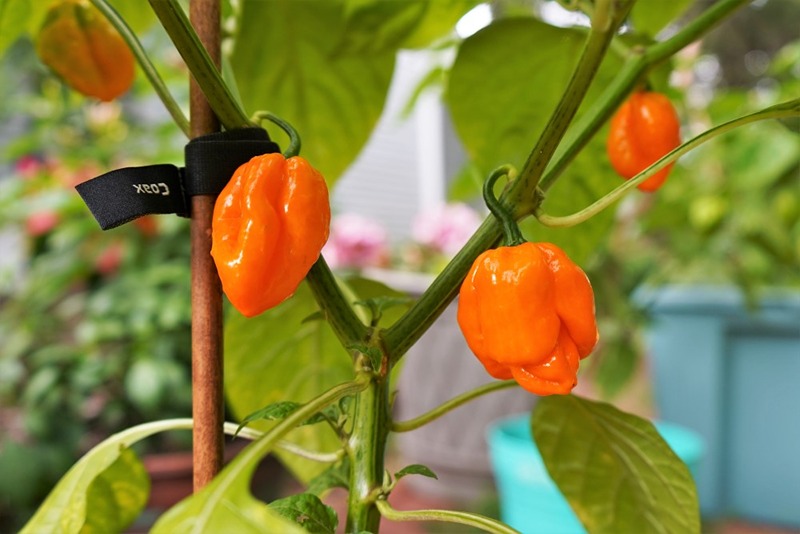
Serrano Peppers
Serrano peppers, often used as a substitute for jalapenos when seeking more heat, are the spicier cousins of their milder counterparts. While most varieties display a green color, serranos can also be found in shades of red, orange, and yellow. These elongated, finger-shaped pods grow to lengths of 3 to 4 inches and are typically ready for harvest around 80 days after planting. Serrano peppers are recognized for their disease-resistant properties and adaptability to humid environments, making them relatively easy to grow. Depending on the specific variety, serrano plants range in height from 24 to 48 inches.
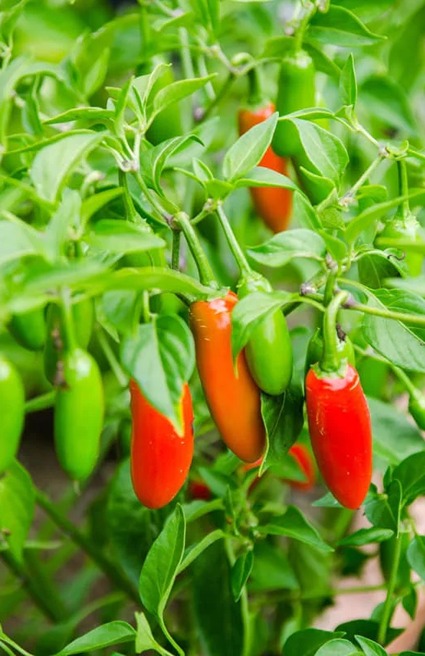
Thai Hot Peppers
Thai hot peppers are exceptionally spicy and are typically grown on plants ranging from 12 inches to 30 inches in height, depending on the variety. The Thai Hot Pepper variety itself reaches just a foot in height, making it ideal for patio containers. On the other hand, the Big Thai Hybrid variety produces 4-inch peppers on 30-inch tall plants, suitable for both ground planting and containers. Thai peppers are usually ready for harvest approximately 70 days after transplanting. They can be eaten fresh or preserved in oil or vinegar, or crushed and used in sauces. Thai hot peppers are approximately 25 times hotter than the average jalapeno, so they should be used sparingly in cooking.

Soil, Temperature, Light, and Water Requirements
To ensure successful cultivation of hot peppers, it’s crucial to pay attention to certain environmental factors. Hot peppers thrive in well-draining soil with a pH range of 6.0 to 7.0. They prefer temperatures between 70°F and 85°F (21°C and 29°C) during the day, with nighttime temperatures above 60°F (15°C).
Adequate sunlight is essential for their growth, requiring a minimum of 6 to 8 hours of direct sunlight daily. However, in areas with scorching temperatures, partial shade during the hottest part of the day can benefit the plants. Water the peppers consistently, keeping the soil evenly moist but not waterlogged. Mulching can help retain soil moisture and regulate temperature fluctuations. Adjust watering frequency based on weather conditions, with extra care during hot and dry spells.
Tips for Successfully Cultivating Hot Peppers
To begin your journey with hot peppers, you can either start from seeds indoors during late winter or purchase transplants and directly plant them in the ground after the final frost in spring. Opting for seeds offers a wider variety of pepper options, as numerous online sellers provide an extensive selection in convenient seed packets. However, if you prefer a simpler approach with less planning, acquiring transplants from local sources and planting them in spring after the last frost date in your region is an excellent alternative.
Hot peppers require a minimum of eight hours of direct sunlight daily to flourish. Worried about having a small or shaded yard? Don’t fret! Peppers thrive in containers and raised beds, making it possible to grow them in any sunny spot you have available. From habanero to cayenne peppers, a couple of pots on a sun-soaked patio can yield a bountiful harvest.
While a pepper’s spiciness is primarily determined by genetics, the growing environment can also influence its heat levels. Hot peppers thrive in warm weather, and high temperatures combined with dry conditions result in a higher concentration of capsaicin—the chemical responsible for the spicy taste. This is precisely why regions like California, Arizona, and New Mexico are renowned for their thriving pepper cultivation. If you do not reside in such favorable areas but desire maximum heat in your hot peppers, you can compensate by choosing hotter varieties. Additionally, limiting water supply to your pepper crop can increase the overall spiciness.
Caution
When handling fresh hot peppers, it is essential to exercise caution. Use disposable gloves to avoid direct contact with the peppers, as the spiciest varieties can potentially cause burns on unprotected skin. Moreover, it is crucial to avoid touching your eyes after handling hot peppers. Contrary to popular belief, removing the seeds does not diminish the heat; instead, the spiciness is concentrated in the pepper’s inner white pith or rib. To reduce the intensity, remove the pith along with the seeds before consuming a fresh hot pepper.
Tips for Successfully Cultivating Hot Peppers
The spiciness of peppers is measured using Scoville units, which range from 0 for mild bell peppers to an incredibly intense 3,000,000 for the Pepper X, currently recognized as the hottest pepper on Earth. It is important to note that peppers with millions of Scovilles are not intended for consumption but rather serve as novelty or “stunt” peppers. For a pleasurable and edible experience, popular options include the poblano pepper with a heat rating of 2,500 Scoville Heat Units (SHU) and the cayenne pepper, packing a punch at 30,000 SHUs.


